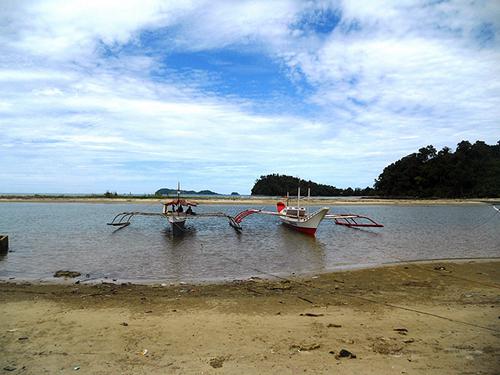
Above photo: Fishing boats in Palawan Province, Philippines. Photo by Mary Aileen M. delas Alas via WorldFish, Flickr/Creative Commons
Take two aspirin with water.
Supported by numerous, rigorous medical studies, this tried-and-true medical advice applies to a host of afflictions—and is accompanied by a wide range of side effects. But it’s a clear treatment plan that people know and understand.
The world’s oceans cover most of our planet: they are home to nearly 50% of the world’s species, and more than 2.6 billion people rely on seafood for some part of their nutrition. However, the health of our oceans is currently threatened by climate change, pollution, habitat decline, and overfishing. It is clear that we need solutions to restore the abundant biodiversity in the world’s seas and to sustain it for future generations … but what would these solutions look like? What would an aspirin for the oceans be?
Marine Protected Areas (MPAs) are increasingly common tools used to conserve threatened or important species and their habitats, increase the abundance of commercially important species for fisheries and recreation, as well as to reduce conflicts amongst marine users. Many countries have established MPAs as a “treatment” to protect their natural marine resources. Despite their general effectiveness, however, some MPAs have seen mixed results—past research has documented the “side effects” of MPAs, both positive and negative—as many social, political, and ecological factors appear to complicate the processes that would otherwise allow MPAs to be successful.
Using data collected from MPAs around the world, our Pursuit at SESYNC seeks to identify the governance and contextual factors that contribute to MPA success in order to guide future conversation. It is expected that our results will not provide a “one size fits all” explanation for MPA success, which presents a challenge when aiming to give recommendations for action. As a response to this issue, one team member drew an analogy during our recent Pursuit meeting from the medical field: after numerous, rigorous studies, medical researchers can prescribe patients to "take two aspirin,” even though results vary from individual to individual. Even though we may show that MPA performance may vary between cases (as with medicine and the human body), there is still a need to communicate clear and concise messages that we can stand behind scientifically, despite the many nuances and caveats that may exist. It’s a communications challenge our Pursuit group is working to address. Almost all the MPAs in the world will be implemented within the next 10 years, and we must address the need to ensure research translates to action.
The discussion also brought to light a “second story” that can be conveyed beyond the results of our analytical models. This came in response to a key question about our research: Do the tools and approaches we have in hand allow us to rigorously assess MPA success? Based on our limited success after months of data scoping and collation, involving local and regional agencies from around the world, it is evident that significant gaps exist in the available data on the impacts of MPAs, particularly in social science. Given these deficiencies, the group discussed how we could respond to key challenges:
- If we have the ability to influence decisions differently, where funds are being allocated, and how research is done in the future, how could we encourage the decision makers, funders, and marine scientists to improve the consistency and collection of ecological and social data in order for us to effectively measure the social and ecological impacts of MPAs?
- While still maximizing the (relatively limited) use of the data that is currently being collected, can we provide recommendations for key social, governance and ecological indicators that permit robust analysis of outcomes?
By the end of the meeting, the group identified some of the main audiences for the research, including MPA managers, other scientists, NGOs, the Global Environmental Facility (GEF), private foundations, representatives of the CDB member states, and the general public. The forums to reach these groups were also identified, and included face-to-face meetings, web outputs, presentations and sessions at major conferences, published manuscripts, and high-level summary reports. It is hoped that the short-term outputs of this Pursuit result in long-term change in marine conservation activities and policy making.
Further Reading:
Expanding Marine Protected Area networks (WWF)
Dr. David Gill is funded through a collaborative partnership with the Luc Hoffmann Institute in support of the SESYNC Pursuit “Solving the Mystery of Marine Protected (MPA) Performance.” He is based at SESYNC’s Annapolis, Maryland center.
The National Socio-Environmental Synthesis Center, funded through a National Science Foundation grant to the University of Maryland and located in Annapolis, Maryland, United States, is a research center dedicated to solving complex problems at the intersection of human and natural systems. Visit www.sesync.org for more information.
The Luc Hoffmann Institute, located in Gland, Switzerland, was created by WWF to respond to the most important questions facing conservation and sustainable development. Visit www.luchoffmanninstitute.org for more information.